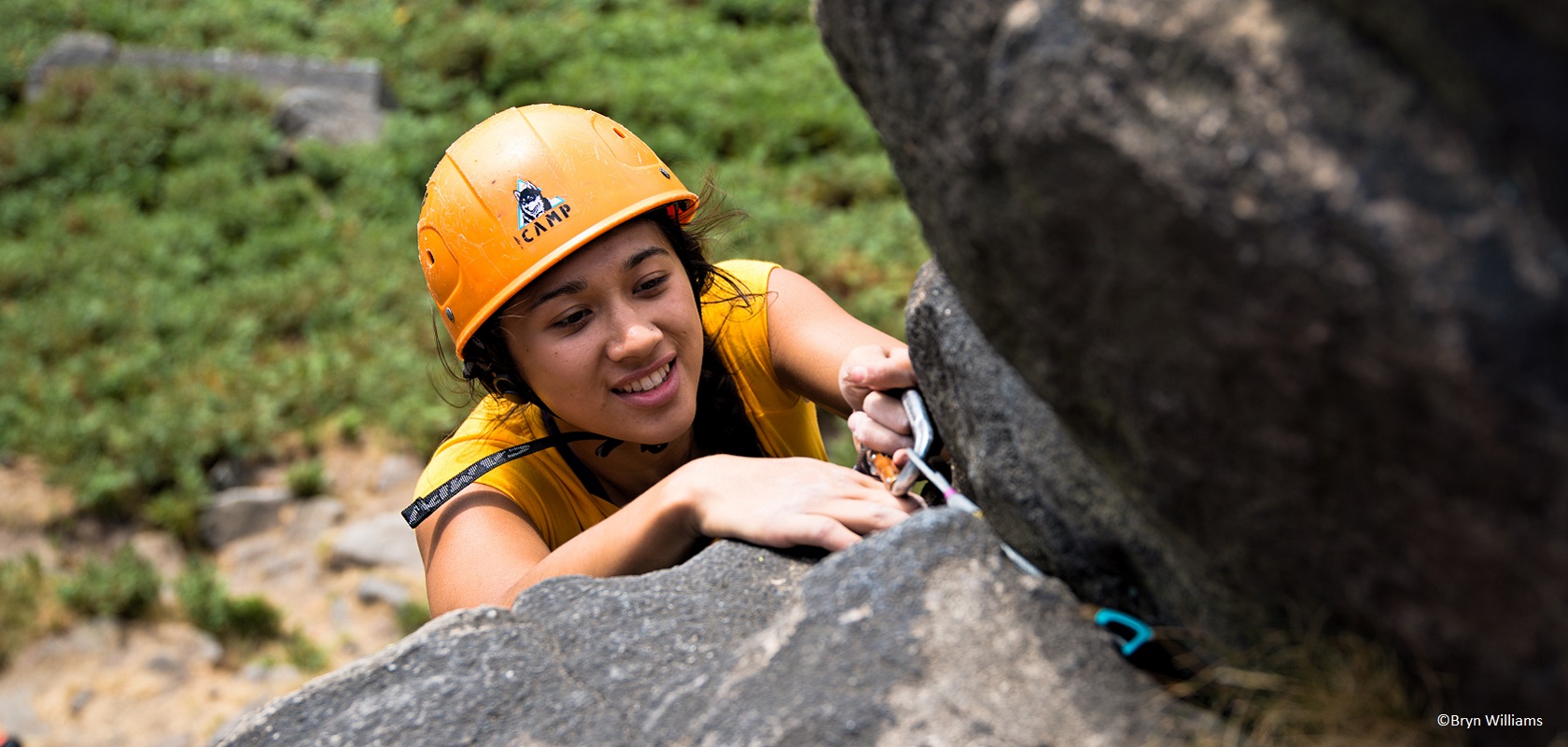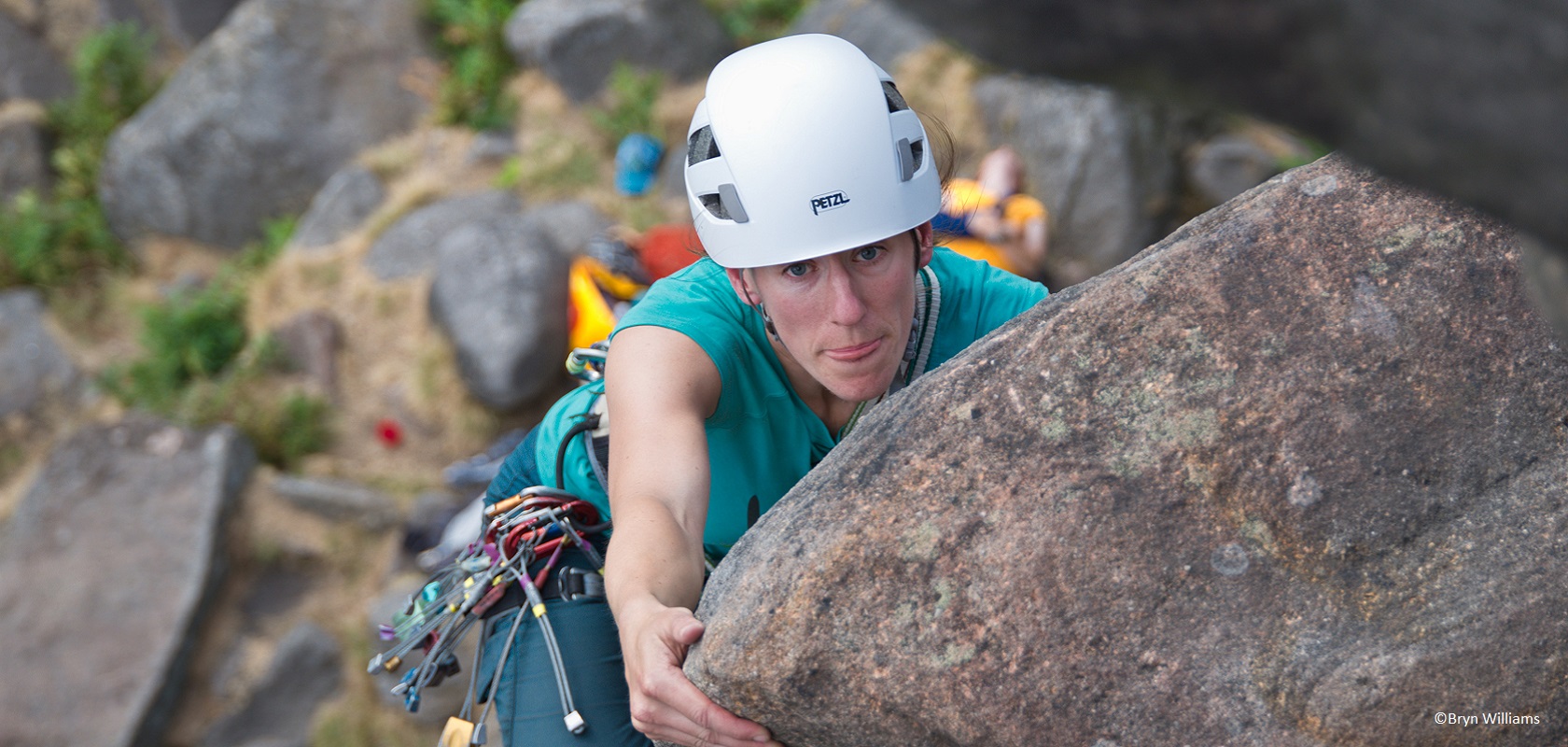Your Guide To Essential Rock Climbing Gear With Mountain Training
As the Official Skills Course Partner of Mountain Training, we proudly support climbers in their Rock Skills courses, offering expert gear advice to elevate the climbing experience.
Mountain Training Rock Skills courses empower you with independence and confidence while climbing outdoors. Whether you're a beginner or an intermediate climber, learn how to choose the right gear, when you'll need it and how to use it, from expert leaders. Read on as we reveal our essentials for days spent on the wall.
Finding The Right Fit
Choosing the right gear is crucial. Although brands design clothing for male and female body shapes, this doesn't mean a specific gender design will provide the perfect fit. We recommend trying a range of clothing to see which feels best for you.
Plus, we've hand-picked our best budget and pro-performance options, so you can choose gear to suit your climbing goals and personal budget.
Need some guidance? Book an appointment at your nearest Snow+Rock store. Our experts will walk you through the specialist gear, clothing and accessories needed for your climbing.
Gear For Rock Skills Introduction + Intermediate
Below is a list of recommended gear for your Rock Skills course. While the course leader will likely lend you most gear, having your own set-up is the first step to becoming an independent climber.
Harness
A well-fitted harness is vital for both safety and comfort. Look for a harness with ample padding and enough loops for your preferred style of climbing. Women's fit harnesses offer dimensions that are more comfortable for most women.
Helmet
Protecting your head is non-negotiable when climbing. Choose a climbing-specific helmet that fits well, provides comfort, and falls within your budget. Hardshell helmets are durable and affordable, while foam helmets offer lightness and comfort at a slightly higher price.
Climbing Shoes
Specialist rubber climbing shoes provide exceptional grip, enabling you to tackle even the tiniest footholds. Opt for snug-fitting shoes that balance comfort with performance. You can wear the same pair of shoes for indoor and outdoor climbing.
Belay Device
Independent climbers must have a suitable belay device and know how to use it safely. Manual belay devices with an HMS carabiner offer versatility for trad climbing, while assisted braking devices provide extra security for sport climbers.
Approach Shoes Or Hiking Boots
Choose outdoor footwear with excellent grip for the approach to the climbing area. The shoes should provide stability and prevent slippage on the rock. If you need help finding the right fit, book a boot-fitting appointment with one of our experts at your nearest Snow+Rock store.
Additional Gear
As well as our core list above, make sure to gather these additional key pieces of gear:
Chalk Bag
A small tote bag that clips onto a climber’s body. It contains chalk to help absorb moisture in hands while climbing.
Nut Key
Also known as nut tools, these are used for removing gear – particularly on a climbing route.
Waterproof Jacket
You’ll need a lightweight, breathable and fully waterproof shell jacket that packs away easily into your pack.
Gloves
Most climbers prefer to climb without gloves however, pack a lightweight pair to keep your hands warm and dry before and after your climb.
Rucksack
A 30 - 40 litre capacity is a good size range to consider. However, the capacity is dependent on the amount of gear you have. So find a pack with all the right pockets for easy-access and book an appointment at Snow+Rock for a proper rucksack fitting.
An Extra Warm Layer
Your body temperature will fluctuate depending on if you’re climbing or taking a break so make sure you have a warm layer to chuck on during those stand-still moments.
Gear For Rock Skills: Learn To Lead Sport
If you're attending a Learn To Lead Sport course, as well as the Gear For Rock Skills Introduction or Intermediate course, the following list is essential to becoming an independent climber.
Quickdraws
Carry 10-12 quickdraws, which should be sufficient for most introductory sport routes in the UK and Ireland. Opt for sport-specific draws or consider sets that work for both trad and sport climbing.
Assisted Breaking Device & HMS Carabiner
While manual belay devices are safe for sport climbing, assisted braking devices offer an additional safety mechanism and greater comfort for the belayer. This is especially beneficial when the climber frequently sits on the rope while working a route.
Dynamic Single Rope
Select a single rope with an appropriate length, at least double the length of the route you intend to climb. 60m is the most common length for sport climbing but adjust according to the routes you typically climb.
Additional Screwgates
Carry two extra screwgate carabiners for stripping a route after climbing. These carabiners should be climbing-specific and screwgate-type to prevent unexpected opening.
120 cm Sling or Lanyard
Secure yourself at the top of a climb before lowering down with a 120cm sling or an adjustable lanyard. This offers versatility and comfort during the process.
Gear For Rock Skills: Learn To Lead Trad
If you're attending a Learn to Lead Trad course, your tutor will provide a climbing rack to experiment with. However, in addition to the previously mentioned gear, you'll need to add the following to your climbing set-up to go on your own trad adventures after the course.
Wires, Nuts + Racking Snapgate Carabiner
Essential for building a trad rack, the wires and nuts come in different sizes. Consider anodised sets for easier size selection or non-anodised sets for cost-effectiveness. Secure them using a racking snapgate carabiner.
Cams + Racking Carabiners
Start with sizes 1- 3 cams, which are commonly found on most trad climbs. Reputable brands offer safe options, and you can add more sizes to your rack as you progress.
Hexes or Large Wires + Racking Carabiners
For wider cracks that won't accommodate small nuts, hexes or large wires are essential. Alternatively, you can opt for bigger nuts depending on your climbing style and the type of rock.
Equipping yourself with the right gear is crucial to becoming an independent and confident rock climber. Whether you're starting with Rock Skills Introduction and Intermediate courses or progressing to Learn to Lead Sport or Trad, having the appropriate gear enhances safety and elevates your climbing experience.
Mountain Training advises you to invest in essential gear before you attend, but feel free to ask your tutor for guidance during the course. Or, drop by your nearest Snow+Rock store for specialist advice on choosing the right gear.
Remember, if you’re attending a course with Mountain Training, you’ll get a 15% discount on gear for your adventures at any Snow+Rock, in-store and online. Your discount can be used before and after the course. T&Cs apply.
Related Articles

Let us know you agree to cookies
We use marketing, analytical and functional cookies as well as similar technologies to give you the best experience. Third parties, including social media platforms, often place tracking cookies on our site to show you personalised adverts outside of our website.
We store your cookie preferences for two years and you can edit your preferences via ‘manage cookies’ or through the cookie policy at the bottom of every page. For more information, please see our cookie policy.




